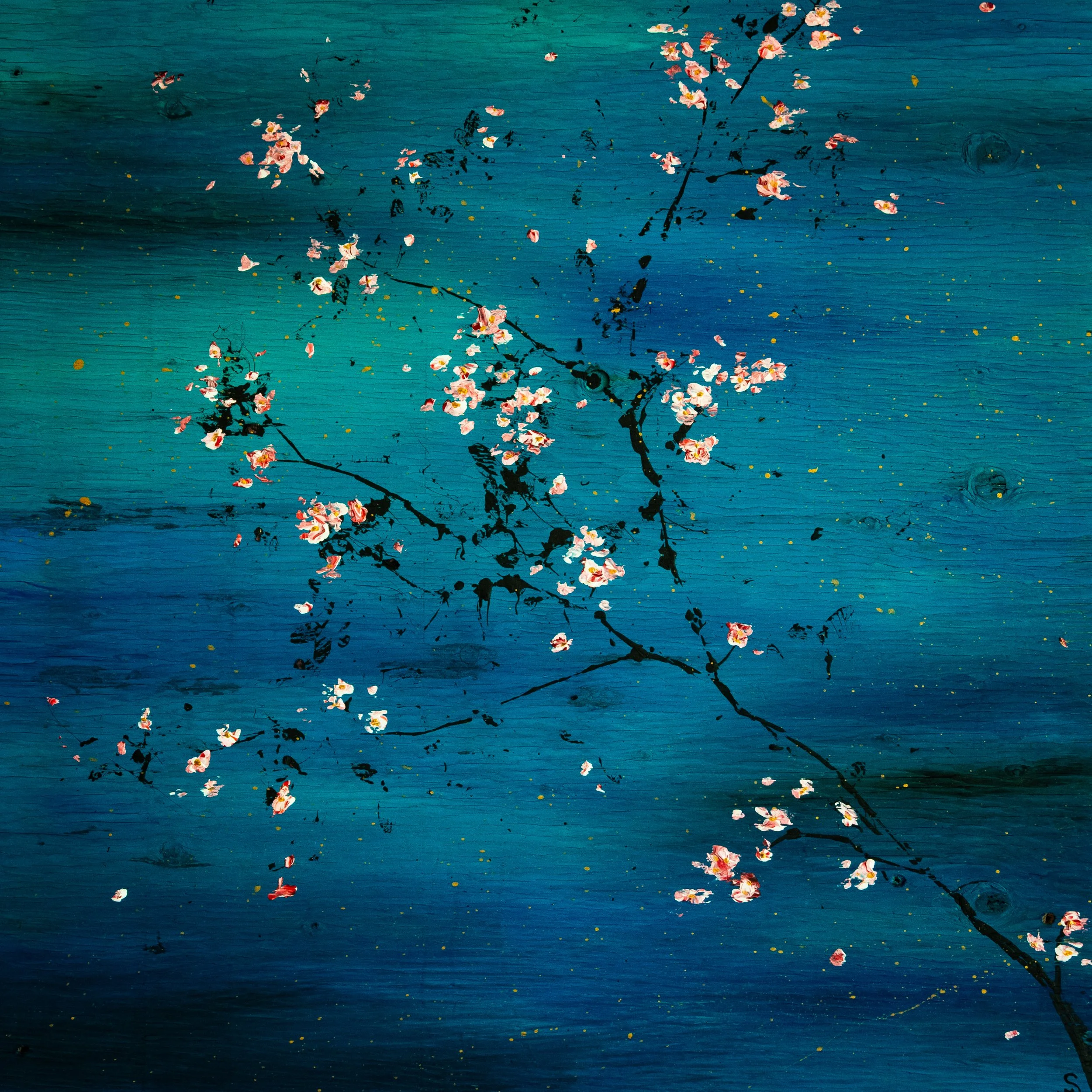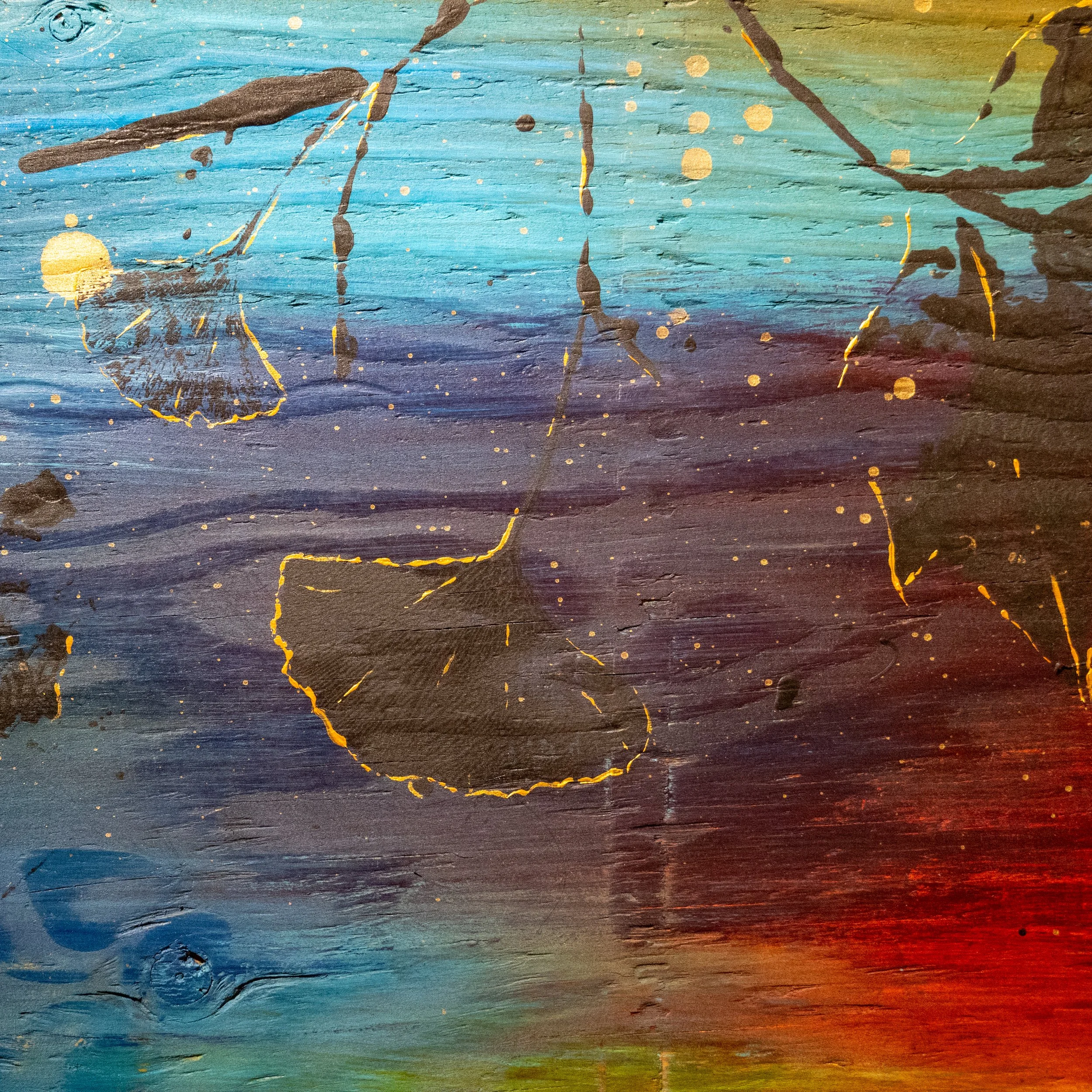Why I love painting on wood
The other day I bumped into another artist from our building. Or rather, he bumped into me, throwing open the back door to the alley. I only just managed to hop out of the way. I was doing what I always seem to be doing five minutes before we open our studio to visitors for each First Saturday of the month: frantically sanding down recycled pieces of wood so I’d have something to paint on, as the visitors pop in to explore the studio and catch a glimpse of me working.
“Ah, are you going to paint on those?” I heard the other artist’s voice through the dust cloud. “I love painting on wood, cos you can really work it with some force!” I sort of imagined him stabbing and prodding at it as he slammed on thick layers of paint, scratching them into place with trowels and other tools of torture. And I kind of wandered if my gentler methods really require heavy solid wood? Or would the much lighter and nimbler canvas do, too?
So my next painting went onto a big canvas. On wood, acrylics dry fast, because the surface sucks the water out of the paint, and I have to rush, frantically mixing the colours into each other, before they refuse to mingle. The larger the painting, the tougher that is, because you have to finish the whole surface, before it dries. On canvas acrylics remain mixable much longer, and I was beginning to enjoy the relaxed process, taking my time to let the paints dance, creating ever new colours and shades. Maybe canvas was the way to go.
But at the next stage I started to understand the other artist. It doesn’t take a lot of force to stretch dents and poke holes into the cloth. I wasn’t attacking it exactly. But even the slapping down of branches, and pressing leaves on to print their silhouette, was enough to deform the canvas. Now I was missing the wood, where I could really work the prints.
And there is another magic benefit to wood. Some of it has such dominant grain patterns, they shimmer right through the paint, adding another dimension. As the light changes or you alter the angle from which you view the painting, the patterns playfully change from being almost invisible to jumping right out, only to retreat to the background again.
Some wood has strong surface texture, almost like scales or peeling paint. Again, how noticeable it is, depends on the light. It almost adds a third dimension to the painting.
So I’ve gone back to painting on wood. It’s more expensive, if you buy pre-made panels from the art supplies store. But my absolute favourite is actually the stuff I recycle from construction sites. There is a particular reddish kind, that has the most magical patterns. And I love how they tell a story: from the rings the tree formed as it grew, to the marks left by the construction process. Left discarded in the alleyways, I pick it up, and give it a new lease of life, as a painting.




